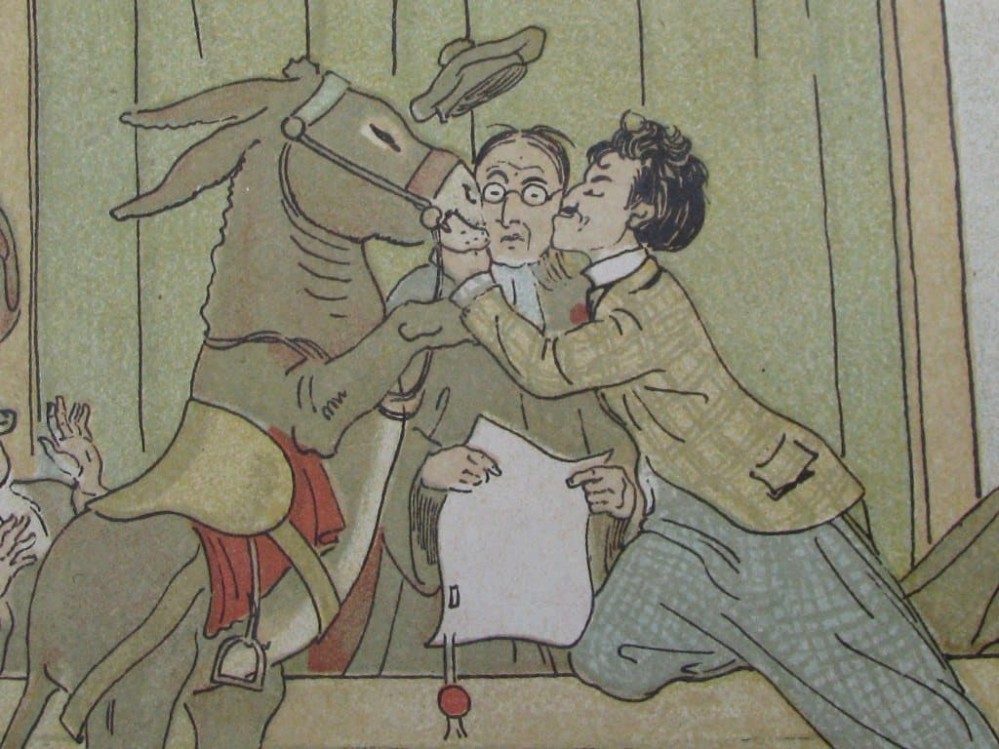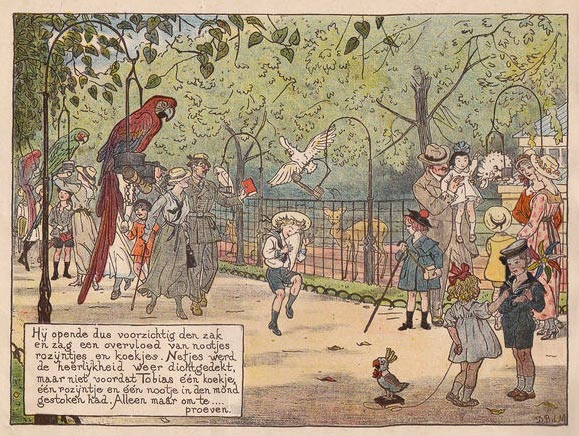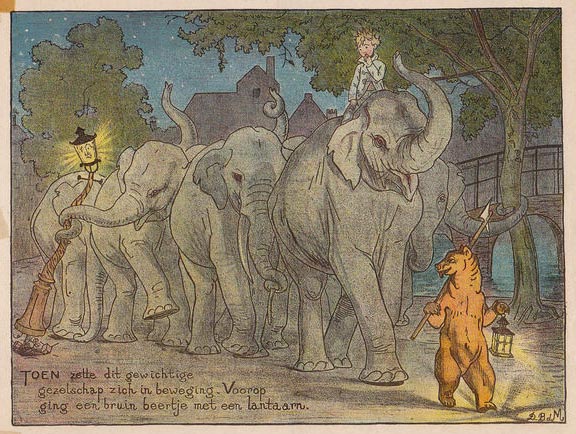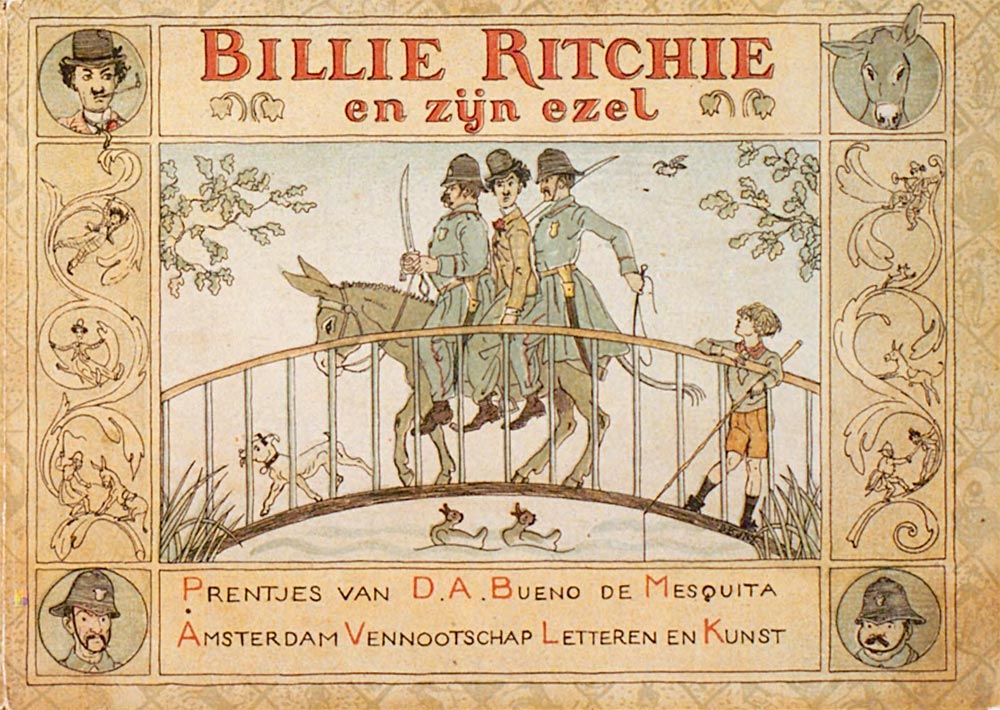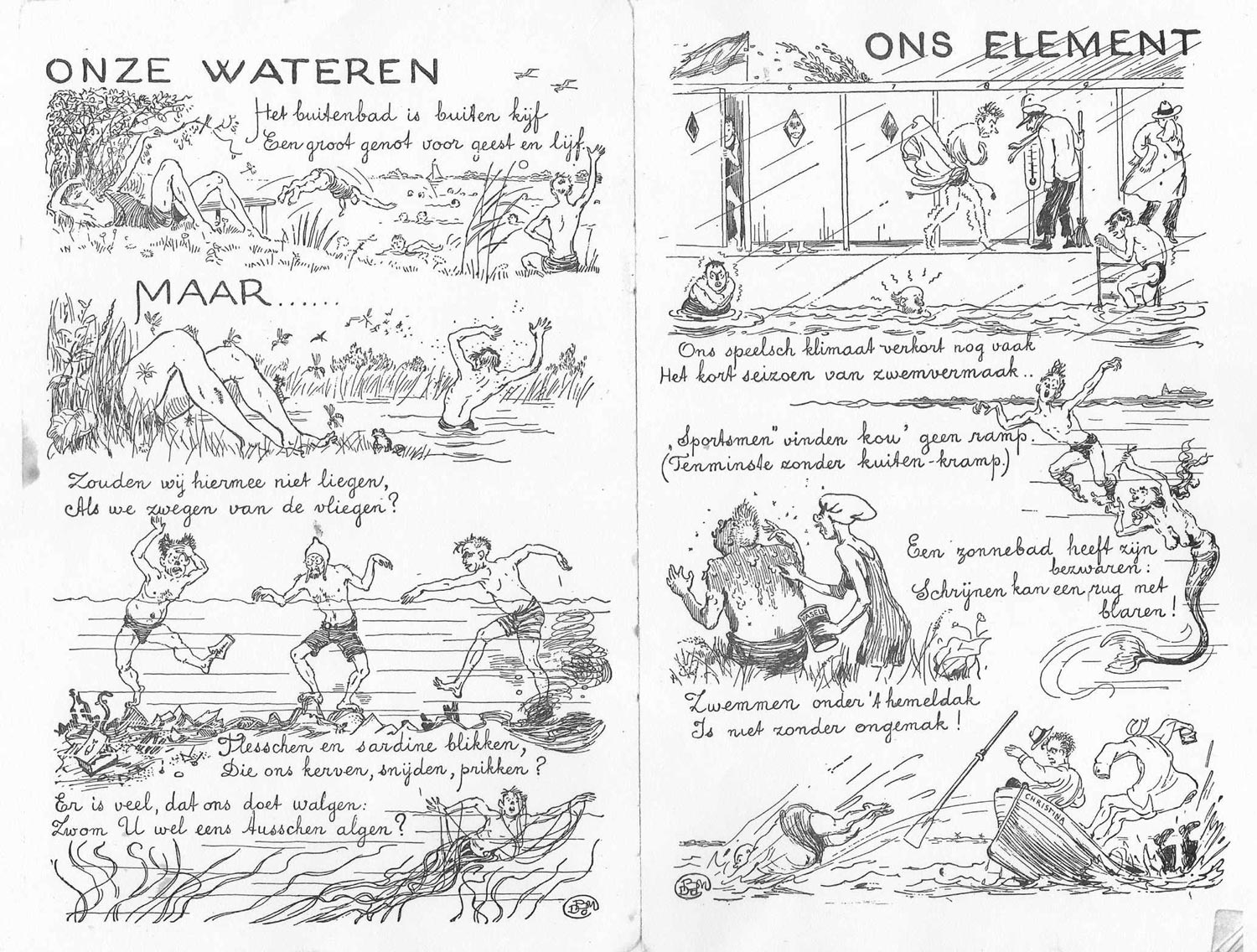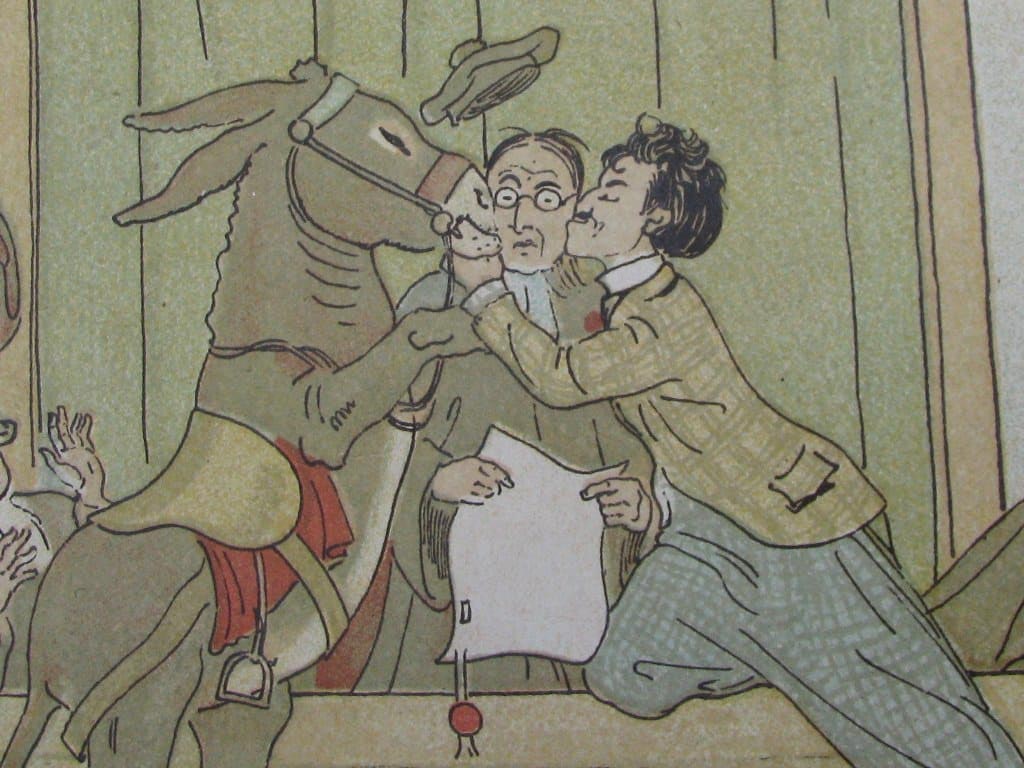'De Geschiedenis van Gulzigen Tobias'.
D.A. Bueno de Mesquita was a Dutch graphic artist, painter, lithographer, woodcut artist and children's book illustrator. He was the second illustrator of Chris van Abkoude's famous children's novel series 'Pietje Bell'. Bueno de Mesquita created two illustrated books which can be considered prototypical comics because they use sequential narratives. The first, 'De Geschiedenis van Gulzigen Tobias' (1910), is a moralistic 'scare 'em straight' tale, set in the Amsterdam zoo Artis. The second, 'Billie Ritchie en Zijn Ezel' (1918), stars the once popular film comedian Billie Ritchie and is the first celebrity comic strip in Dutch history.
Early life and career
David Abraham Bueno de Mesquita was born in 1889 in Amsterdam. His parents were Jews of Spanish descent. Bueno de Mesquita studied at the Rijksnormaalschool voor Tekenonderwijzers ("State School for Drawing Education") in 1906 and between 1909 and 1913 at the Rijksschool voor Kunstnijverheid ("State School for Arts and Crafts"). In 1921-1922, he took evening courses at the Academy of Fine Arts in Amsterdam.
'De Geschiedenis van Gulzigen Tobias'.
De Geschiedenis van Gulzigen Tobias
In 1910, Bueno de Mesquita wrote and illustrated a comic/picture book, 'De Geschiedenis van Gulzigen Tobias'. The story is a text comic about a little boy, Tobias, who is about to visit the Amsterdam zoo Artis. His aunt gives him a whole bag of sweets and cookies to feed the animals. But greedy Tobias refuses to share and gobbles everything up himself. That night he is too full to eat and goes to bed with a tummy ache. At night, the boy is lifted from his bed by a parade of elephants. They take him to Artis where a group of monkeys and swans bring him to some birds of prey. One of them, a vulture, identifies him as "greedy Tobias" and lifts him up in the sky straight to the moon, personified by a large man sleeping on a cloud. The vulture drops Tobias into the moon's mouth, whereupon the boy wakes up with a scream. It turns out to have been a nightmare. Having learned his lesson, Tobias now shares his food with all the animals (a dated moral to modern readers, since nowadays visitors are no longer allowed to feed zoo animals).
'De Geschiedenis van Gulzigen Tobias' seems inspired by Winsor McCay's 'Little Nemo in Slumberland' (1905). In both cases a boy's dream is used as an excuse to create highly imaginative and beautifully designed fantasies. Even the artwork has a similar look. The book was published in landscape format by Vennootschap Letteren en Kunst, Amsterdam. Bueno de Mesquita had another connection with Artis as well. In 1915, he made an illustration for the liber amicorum of the director of Artis, C. Kerbert.
'Billie Ritchie en Zijn Ezel'.
Billie Ritchie en Zijn Ezel
In 1914, Bueno de Mesquita traveled to Rome and Switzerland, where he stayed in the company of Dutch anthropologist and gay activist Arnold Aletrino. Between 1915 and 1916, the illustrator lived in Madrid, where he studied the work of painter Diego Velazquez. In 1918, Bueno de Mesquita created another comic book, 'Billie Ritchie En Zijn Ezel' (1918). It stars the once popular Scottish film comedian Billie Ritchie (who looks a lot like Charlie Chaplin yet always claimed Chaplin stole his act). The story is written in rhyme and features Ritchie riding a donkey in the park. He is arrested for causing mayhem and the judge sentences him to jail. But Ritchie and his pet make so much noise that they are freed again under the condition that they will never repeat their offense. Historically, 'Billie Ritchie En Zijn Ezel' is important as probably the oldest example of a Dutch celebrity comic. The first Dutch comic about an actual Dutch celebrity was 'Ome Keesje' (1930s), based on a character from the radio series 'De Familie Mulder', written by the performer in question, Willem van Cappellen, and illustrated by Henk Zwart.
David Bueno de Mesquita illustrated both the flyer and the brochure for the opening of the Sportfondsenbad in the Amsterdam Linneausstraat in 1929. The booklet contained a comic strip which presented the benefits of an indoor pool.
Pietje Bell
In 1922, Bueno de Mesquita became the second official illustrator of Chris van Abkoude's 'Pietje Bell' novels. The first two books, 'Pietje Bell' (1914) and 'De Vlegeljaren van Pietje Bell' (1920), were illustrated by Jan Rinke. Bueno de Mesquita visualized the young rascal's adventures from the book 'De Zonen van Pietje Bell' (1922) on, following up with 'Pietje Bell's Goocheltoeren' (1924) and 'Pietje Bell in Amerika' (1929). Later books in the series have been illustrated by Jan Lutz, Henri Pieck (brother of Anton Pieck) and Hans Borrebach. In 1991, the original novel was adapted into a comic book by Dick Matena. David Bueno de Mesquita additionally provided artwork for the society of sports funding, and the Amsterdam-based swimming pool Sportfondsenbad in particular (1929).
Recognition
Bueno de Mesquita won both the Prix de Rome (1913) and the Willink van Collenprijs (1921).
Final years and death
Bueno De Mesquita was a member of artists' societies like Arti et Amicitae and the St. Lucas Vereniging. In 1929, he moved to Florence, Italy, where he would remain for the rest of his life. He passed away in 1962.
'Billie Ritchie en Zijn Ezel'.
More about Bueno de Mesquita's work for the Sportfondsenbad on geheugenvanoost.amsterdam


